Black Hills 5.56mm 77 Grain Tipped MatchKing Accuracy Evaluation Update

In 2016 I posted an in-depth review of the Black Hills 5.56 77 grain Tipped MatchKing ammunition. Three 10-shot groups of that 2016 lot had an average extreme spread of 1.26”. The smallest of those groups had an extreme spread of 1.14” with a mean radius of 0.39”.
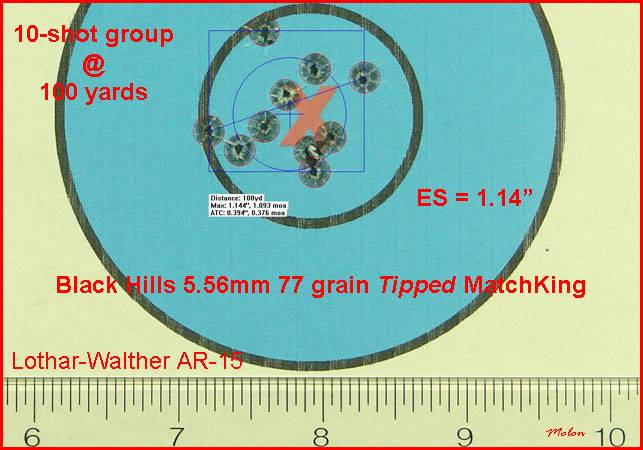
The cartridge overall length for the 2016 lot of the Black Hills 77 grain Tipped MatchKing averaged 2.246”, while a 2023 lot averaged 2.243”. The length of the bullet itself is basically the same for both lots. The 2016 lot was loaded in Winchester brass and the 2023 lot is loaded in Lake City brass with stab primer crimps. Both lots have sealant in the primer pockets and neither lot has sealant at the case mouth.

In my 2016 review, I noted that the 77 grain Tipped MatchKing was one of the longest bullets being commercially loaded to magazine length in the 5.56mm cartridge and that it had such a long ogive that the cannelure extended past the bearing surface of the bullet and onto the ogive, giving the grooves of the cannelure a rather unique “arrowhead” appearance.
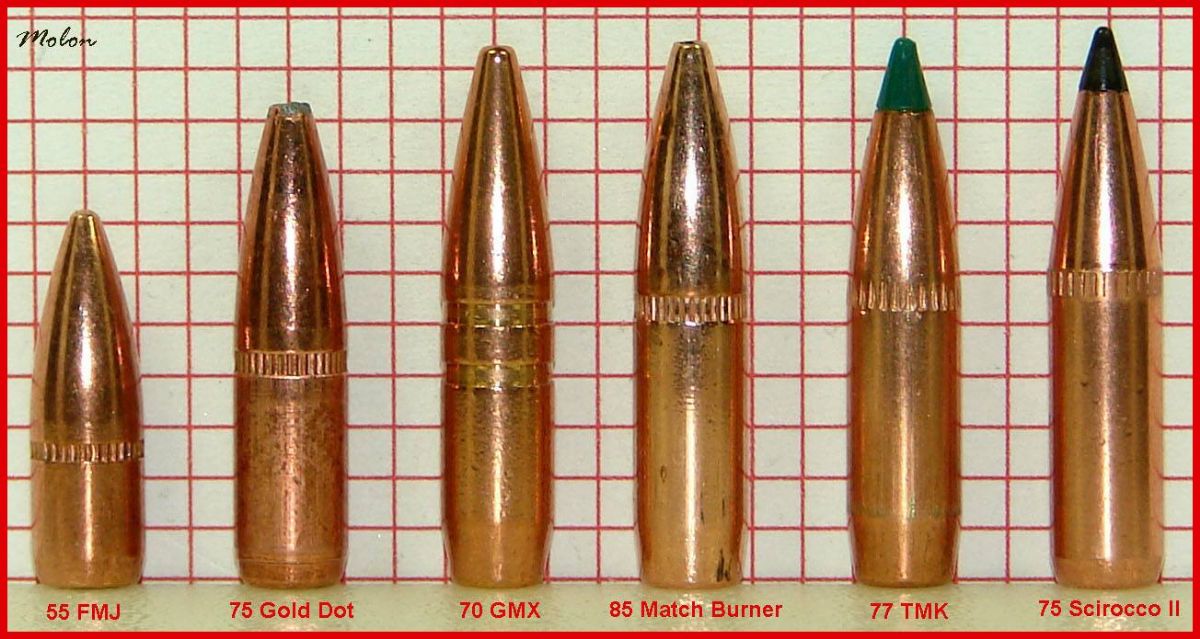

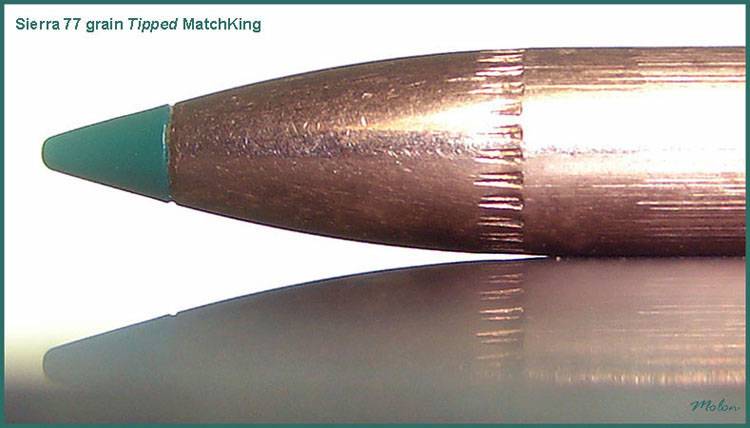
The base to ogive measurement of the bullets in the 2023 lot is approximately 0.017” longer than the 2016 lot and the configuration of the bullet at the junction of the bearing surface and the ogive now allows for a full-fledged cannelure that does not appear to extend into the ogive, or it was just a matter of pressing the cannelure deeper that makes it appear so.
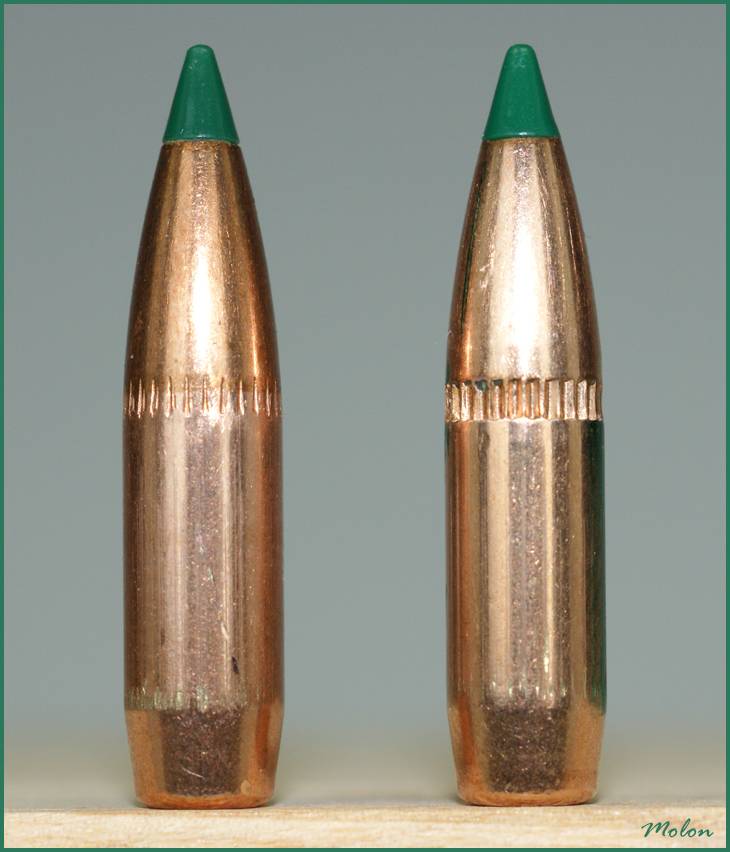
A 10-shot group of the 2023 lot of the Black Hills 5.56mm 77 grain Tipped MatchKing ammunition fired from the same Lothar Walther barreled AR-15 used to test the 2016 lot, fired under the same conditions from a distance of 100 yards had an extreme spread of 0.86” and a mean radius of 0.24”.
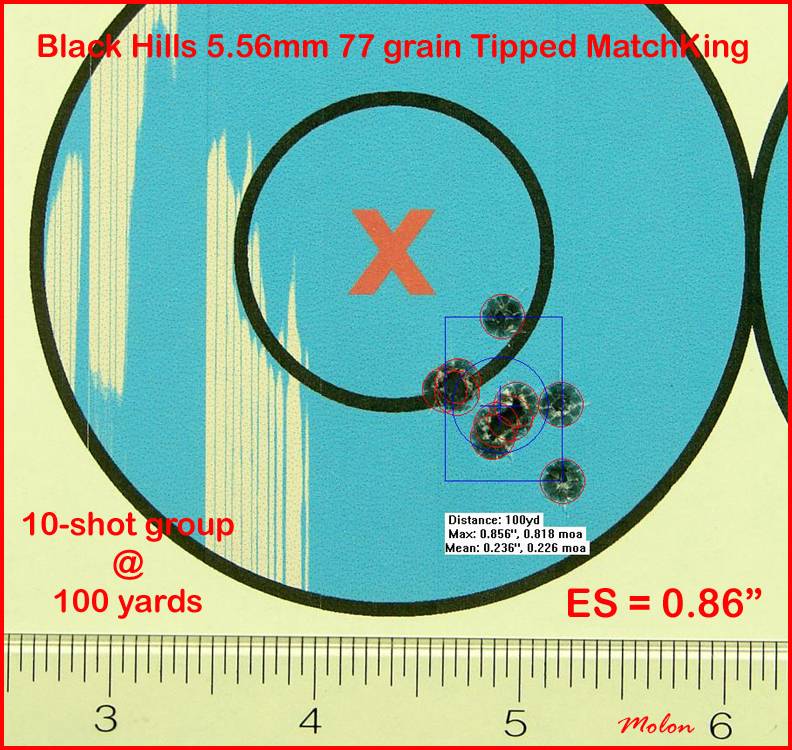
I’ll be posting chronograph data for the 2023 lot in the near future.
10/27/23
I chronographed two different lots of the 2023 Black Hills 5.56mm 77 grain Tipped MatchKing ammunition from an AR-15 with a chrome-lined, NATO chambered, 20” Colt barrel with a 1:7” twist.

The muzzle velocity that I obtained from the 2016 lot of this ammunition is shown in the table below. Black Hills now advertises that this load has a velocity of 2750 FPS from a 20” test barrel.
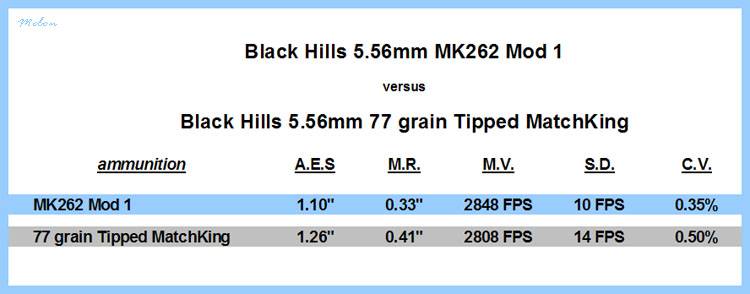
Chronographing was conducted using an Oehler 35-P chronograph with “proof screen” technology. The Oehler 35P chronograph is actually two chronographs in one package that takes two separate chronograph readings for each shot (primary velocity and proof velocity) and then compares those readings to a statistical table to determine if there is any significant difference between the two readings to determine if the primary velocity is a valid reading or likely to be an erroneous reading. If there is an erroneous reading, the chronograph “flags” the shot to let you know that shot is invalid. There were no invalid shots flagged during this testing.
The velocity stated below is the muzzle velocity as calculated from the instrumental velocity using Oehler’s Ballistic Explorer software program. The string of fire consisted of 10 rounds over the chronograph.
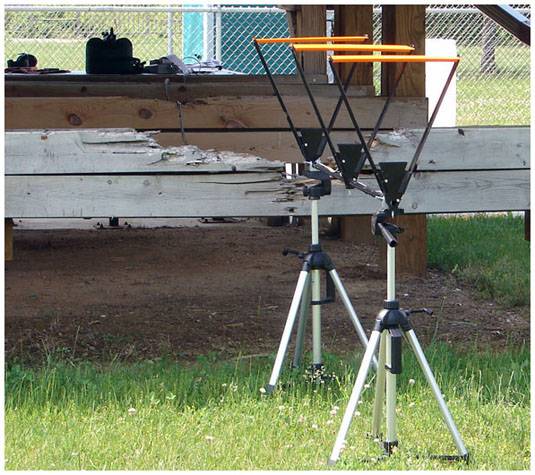

Each round was single-loaded and cycled into the chamber from a magazine fitted with a single-load follower. The bolt locked-back after each shot allowing the chamber to cool in between each shot. This technique was used to mitigate the possible influence of “chamber-soak” on velocity data. Each new shot was fired in a consistent manner after hitting the bolt release. Atmospheric conditions were monitored and recorded using a Kestrel 4000 Pocket Weather Tracker.

Atmospheric conditions
Temperature: 71 degrees F
Humidity: 42.5%
Barometric pressure: 30.05 inches of Hg
Elevation: 950 feet above sea level
The muzzle velocity for lot #703 was 2779 FPS with a standard deviation of 16 FPS. This lot had a coefficient of variation of 0.58%.
The muzzle velocity for lot #723 was 2762 FPS with a standard deviation of 21 FPS and a coefficient of variation of 0.76%.
For those of you who might not be familiar with the coefficient of variation (CV), it is the standard deviation, divided by the mean (average) muzzle velocity and then multiplied by 100 and expressed as a percentage. It allows for the comparison of the uniformity of velocity between with different muzzle velocities.
For comparison, the mil-spec for M193 allows for a coefficient of variation of approximately 1.2%, while one of my best 77 grain OTM hand-loads, with a muzzle velocity of 2639 PFS and a standard deviation of 4 FPS, has a coefficient of variation of 0.15%.
….

In 2016 I posted an in-depth review of the Black Hills 5.56 77 grain Tipped MatchKing ammunition. Three 10-shot groups of that 2016 lot had an average extreme spread of 1.26”. The smallest of those groups had an extreme spread of 1.14” with a mean radius of 0.39”.

The cartridge overall length for the 2016 lot of the Black Hills 77 grain Tipped MatchKing averaged 2.246”, while a 2023 lot averaged 2.243”. The length of the bullet itself is basically the same for both lots. The 2016 lot was loaded in Winchester brass and the 2023 lot is loaded in Lake City brass with stab primer crimps. Both lots have sealant in the primer pockets and neither lot has sealant at the case mouth.

In my 2016 review, I noted that the 77 grain Tipped MatchKing was one of the longest bullets being commercially loaded to magazine length in the 5.56mm cartridge and that it had such a long ogive that the cannelure extended past the bearing surface of the bullet and onto the ogive, giving the grooves of the cannelure a rather unique “arrowhead” appearance.



The base to ogive measurement of the bullets in the 2023 lot is approximately 0.017” longer than the 2016 lot and the configuration of the bullet at the junction of the bearing surface and the ogive now allows for a full-fledged cannelure that does not appear to extend into the ogive, or it was just a matter of pressing the cannelure deeper that makes it appear so.

A 10-shot group of the 2023 lot of the Black Hills 5.56mm 77 grain Tipped MatchKing ammunition fired from the same Lothar Walther barreled AR-15 used to test the 2016 lot, fired under the same conditions from a distance of 100 yards had an extreme spread of 0.86” and a mean radius of 0.24”.

I’ll be posting chronograph data for the 2023 lot in the near future.
10/27/23
I chronographed two different lots of the 2023 Black Hills 5.56mm 77 grain Tipped MatchKing ammunition from an AR-15 with a chrome-lined, NATO chambered, 20” Colt barrel with a 1:7” twist.

The muzzle velocity that I obtained from the 2016 lot of this ammunition is shown in the table below. Black Hills now advertises that this load has a velocity of 2750 FPS from a 20” test barrel.

Chronographing was conducted using an Oehler 35-P chronograph with “proof screen” technology. The Oehler 35P chronograph is actually two chronographs in one package that takes two separate chronograph readings for each shot (primary velocity and proof velocity) and then compares those readings to a statistical table to determine if there is any significant difference between the two readings to determine if the primary velocity is a valid reading or likely to be an erroneous reading. If there is an erroneous reading, the chronograph “flags” the shot to let you know that shot is invalid. There were no invalid shots flagged during this testing.
The velocity stated below is the muzzle velocity as calculated from the instrumental velocity using Oehler’s Ballistic Explorer software program. The string of fire consisted of 10 rounds over the chronograph.


Each round was single-loaded and cycled into the chamber from a magazine fitted with a single-load follower. The bolt locked-back after each shot allowing the chamber to cool in between each shot. This technique was used to mitigate the possible influence of “chamber-soak” on velocity data. Each new shot was fired in a consistent manner after hitting the bolt release. Atmospheric conditions were monitored and recorded using a Kestrel 4000 Pocket Weather Tracker.

Atmospheric conditions
Temperature: 71 degrees F
Humidity: 42.5%
Barometric pressure: 30.05 inches of Hg
Elevation: 950 feet above sea level
The muzzle velocity for lot #703 was 2779 FPS with a standard deviation of 16 FPS. This lot had a coefficient of variation of 0.58%.
The muzzle velocity for lot #723 was 2762 FPS with a standard deviation of 21 FPS and a coefficient of variation of 0.76%.
For those of you who might not be familiar with the coefficient of variation (CV), it is the standard deviation, divided by the mean (average) muzzle velocity and then multiplied by 100 and expressed as a percentage. It allows for the comparison of the uniformity of velocity between with different muzzle velocities.
For comparison, the mil-spec for M193 allows for a coefficient of variation of approximately 1.2%, while one of my best 77 grain OTM hand-loads, with a muzzle velocity of 2639 PFS and a standard deviation of 4 FPS, has a coefficient of variation of 0.15%.
….
Last edited:

